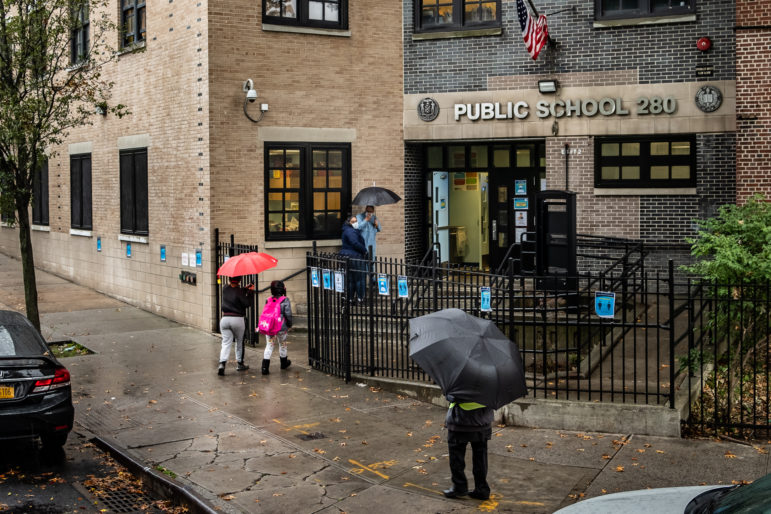“While I applaud Gov. Hochul’s initial steps to alleviate the shortage of services in school, I hope that she and federal officials consider addressing the therapist shortage …Without those steps, waiting lists will remain long.”

Adi Talwar
A distressing new study seems to confirm an uncomfortable suspicion many mental health experts have, which is that there is a clear link between going to school in person and suicide rates.
Dips in youth suicide have always occurred in summer and during the holiday break, which has been the source of our suspicion. But the initial pandemic lockdowns in 2020, when kids weren’t going to school in person, showed a dramatic dip in suicides, despite the loneliness and stress of online learning. And if that weren’t enough confirmation that in-school education increases the likelihood of youth suicide, the study offered further proof—as lockdowns eased and kids returned, suicides returned as well.
Naturally, no one is suggesting that the cure for youth suicides is to abandon going to school in person. The social, academic and emotional benefits of learning together and just existing together are enormous and obvious. But we would be foolish as a society to do nothing about this link.
One apparent reason this happens may be the well-known connection between bullying and suicide. Online bullying is harmful as well, but it apparently does not lead kids to end their lives at the same rate as in-person bullying does.
But another possible reason, noted in the study’s last sentence, is a lack of access to mental health care, particularly for children. This is a problem both in and out of schools. Fortunately in New York State, Gov. Kathy Hochul and other leaders are starting to notice and offering solutions, at least in classrooms.
The governor has proposed increasing funding for school-based mental health services, and increasing reimbursement rates for school-based clinics. Meanwhile, state Comptroller Thomas DiNapoli has prodded the city’s Department of Education (DOE) to ensure that all city schools offer the mental health programs it says are available. A recent audit said none of those programs are available at more than a third of city schools.
This is a start. Another step all schools could take is to further increase the presence of counselors, family therapists, psychologists and social workers in schools. There are now 408 students for each counselor nationally, compared to 424 pre-pandemic. That’s a slight improvement, but it’s still far from the 250-to-1 ratio that is ideal.
The bigger problem may be away from school, however. Therapists generally are in short supply, and the pool shrinks when trying to find one who takes insurance, and contracts further when the goal is to find one who treats children at all. There are several reasons for that:
- Child therapy is different from adult therapy. It requires more creativity, more preparation and even more space to accommodate an office with the art supplies, books and toys used to engage children. That also requires a heavier financial investment from the therapist.
- Child therapists also have to talk with parents, school personnel and others as part of treatment. Insurance companies don’t pay them for that.
- When school is in session, it’s harder to schedule children, who are available only in late afternoons, evenings and weekends.
- It doesn’t pay. Most child therapists are licensed clinical social workers, who get paid on average just over $50,000 a year, despite their graduate degrees, post-graduate training and other investments. Further, many health insurance plans reimburse mental health professionals at a lower rate than medical doctors.
So while I applaud Gov. Hochul’s initial steps to alleviate the shortage of services in school, I hope that she and federal officials consider addressing the therapist shortage. Steps that would help include increasing funding for mental health agencies so they can pay therapists a living wage, and requiring insurance companies to compensate therapists appropriately and pay them for the considerable work they do when the client is not in the office. Without those steps, waiting lists will remain long.
We hear often that there is a crisis in child mental health, and it’s true. It’s time to start responding as if it’s a crisis.
Martha Fling is president and CEO of Ackerman Institute for the Family, which offers family therapy and trains therapists. Previously, she founded SeaBridge, a residential treatment center for adolescents with substance abuse and mental health disorders.
If you or someone you know is experiencing a crisis, please reach out immediately to The Lifeline by dialing or texting 988 for free and confidential support.
New York City also operates the NYC Well hotline to connect New Yorkers with confidential crisis counseling, mental health and substance use support, information and referrals. You can reach the toll-free help line 24 hours a day, 7 days a week by phone, text and online chat: 1-888-NYC-WELL (1-888-692-9355); 1-888-692-9355 (Español); 1-888-692-9355 (繁體中文); 711 (TTY for hearing impaired).









2 thoughts on “Opinion: Kids Belong in School, But Need Mental Healthcare Access”
The same could be said for SETSS providers…many of whom are also addressing the mental health challenges of students with disabilities, who are at greatest risk for mental illness and who are not receiving the counseling sessions authorized on the IEPs. While New York State is offering free online CTLE credits for teachers related to the topic of trauma and mental illness (hiding in plain sight), the same courses should be offered (and even mandated) to parents of the students. We need to take a more wholistic community wide approach to supporting students’ social emotional needs.
definitely need to do so.